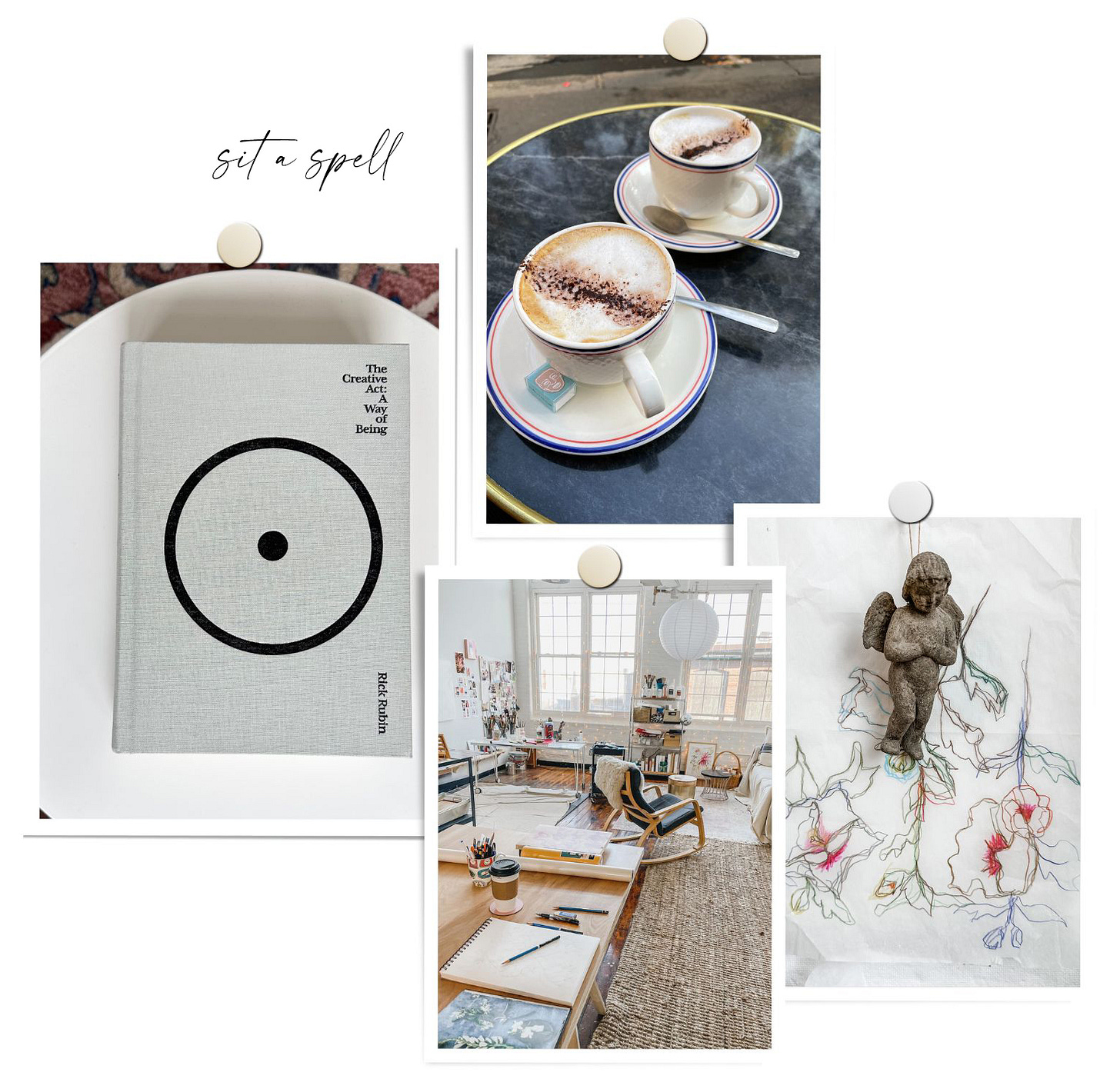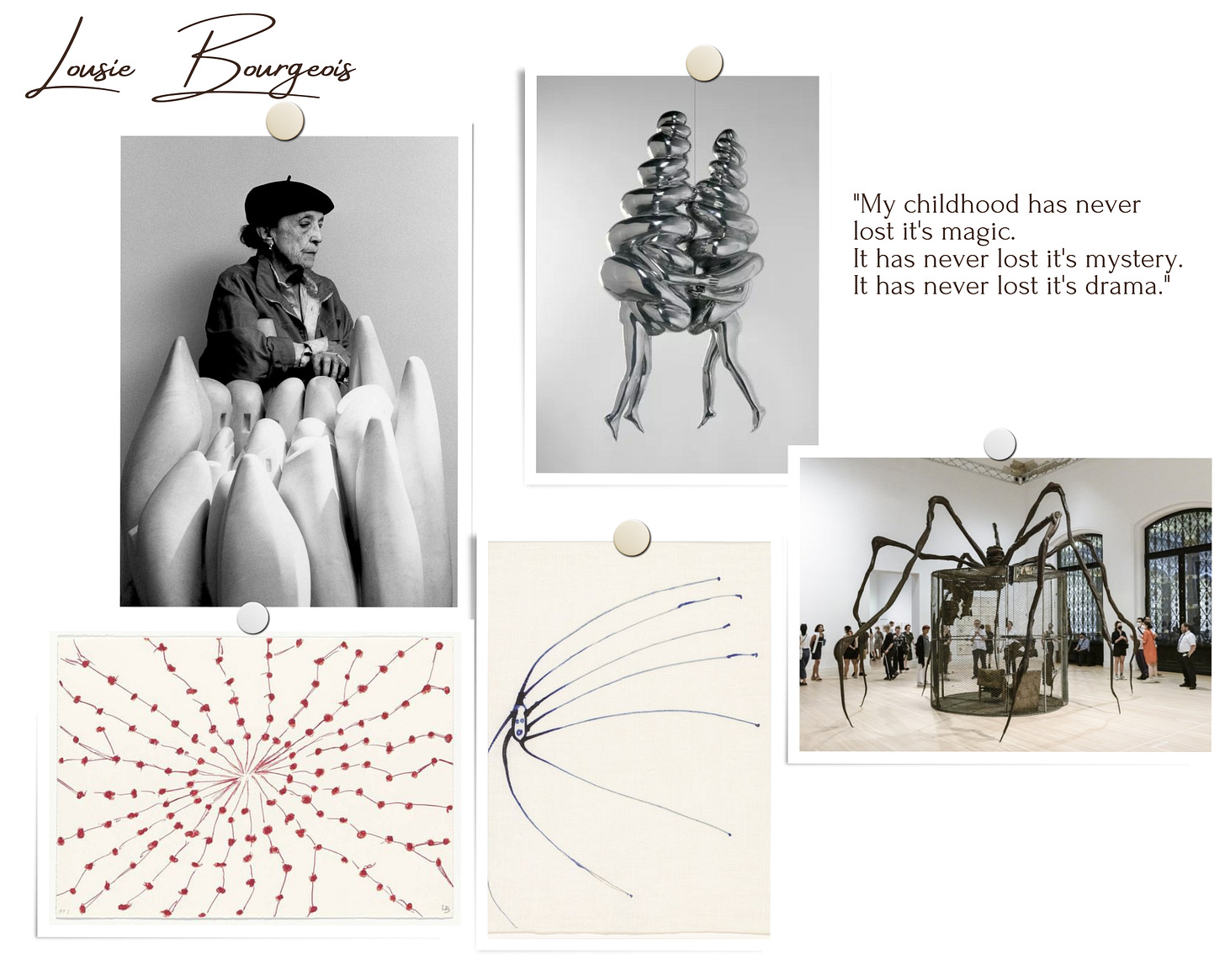"Instead of sounding like others, value your own voice.
Develop it. Cherish it.
The reason to make art is to innovate and self-express, show something new, share what's inside, communicate your singular perspective."
This is a quote from Rick Rubin's Book, The Creative Act: A Way of Being, which I highly recommend. It is just fabulous. I just found it and am completely aligned with his approach.
I like that he's trying to get his point across using these different phrases to say the same thing making sure you hear it.
To me, these things equal each other.
To innovate = show something new
Self-express = share what's inside
The last set of instructions struck me.
Communicate your singular perspective.
To me, that is where the grace and magic happen.
I love the phrase "singular perspective." The idea of being made up of nuances that create the only version of you as a human being has always intrigued me. In Junior High, I press-ironed "UNIQUE" on my favorite t-shirt and wore it in regular rotation with my "Foxy Lady" one, a brave declaration for a girl in 8th grade.
Of course, we have all heard that we are unique (Thanks, Mom!) and that our experiences compound to give us a very individualized perspective. In fact, we have heard it so much we most likely aren't accessing the creative potential of it.
How can our singular experience be applied and utilized to fuel our artistic practice?
How much do we let a collective perspective into our psyche and build upon that? Do we even allow something "collective" in when we are creating?
Collective feels like funny almost alien Star Trek-ish. Is collective perspective good, bad, behind the curve, used, washed up...Oh the list of words I could use!
Here is a "unique" Monica-point-of-view:
The fashion shapes and silhouettes that changed between the early 60's to late 70's were really dramatic, in hindsight, they even seem comical. I blame the Beatles because it just seems like a fun thing to do. I would also blame, or credit, advances in fabric technology, I mean, polyester was a huge breakthrough. (Super interesting article on polyester and sustainable fashion, I am such a nerd.) Collectively, this swing in style caught on, and men everywhere, even the conservative men to whom these bold new looks were pushing against, began adopting these looks as standard.
It feels good to be a part of something, yes? NO fun being square, right? Probably not the most sophisticated example, but folks, when straight men worldwide adopt dramatic fashion changes, it is a "collective" experience. Collective perspective can bring people together.
But the words "singular perspective" float gloriously in the air, full of potential.
Let's get serious, which will seem odd since I have just mentioned the oddities of male fashion in the 70s.
Louise Bourgeois is an artist who comes to mind who had a singular perspective. I liked reading that she "consistently plumbed her own biography for subject matter and inspiration."
Louise Bourgeois, Spider, 1997. Installation view, Louise Bourgeois: The Woven Child, 2022
© Gropius Bau, photo: Luca Girardini
I immediately see her spider sculptures and drawings when I think of her. The drama (or trauma) of life with an ill mother and misogynist, unfaithful father fueled her singular perspective for her entire career.
On the first introduction to her many spider sculptures, they may appear strangely beautiful yet slightly menacing.
Yet, in her own words, "The Spider is an ode to my mother. She was my best friend. Like a spider, my mother was a weaver...Like spiders, my mother was very clever. Spiders are friendly presences that eat mosquitoes. We know that mosquitoes spread diseases and are therefore unwanted. So, spiders are helpful and protective, just like my mother."
Louise was a pioneer her entire career, and she shared her inner life, and her anxiety around loneliness with unflinching honesty. Since she lived in our lifetime, we are privy to interviews and documentaries with the artist, where you can experience her singular perspective, first hand.
I found this lovely and interesting 12 min video excerpt on Art21 of her discussing sculptures of her hands and arms, mother and childs intertwined.
In it, she discusses how she thought about the location and public access to these sculptures.
Her "Way In" to her art creation was her responding to her own complicated history, dissecting it, reckoning with it. For us, it plays out as an invitation to examine shared emotions, fear of abandonment, and the need for comfort, healing, and in that act, her singular perspective shifts us into a collective perspective.
Honest art, in it's highest form, can unite and heal us, collectively.
Thanks for reading today's post. Maybe it takes my singular perspective to combine a foxy lady t-shirt, men's wide lapel suits, and Louise Bourgeois all in one article!









Exceptional thinking and writing here, Monica. Thank you.
Wonderful thought provoking post Monica! I admire Louise's ability to use her art as a healing process which was then relatable to others. Remaining true to your own artistic voice is so important and sometimes challenging in this wild online world. 😉 Thanks so much for the book share....sounds really interesting! xx 🤗